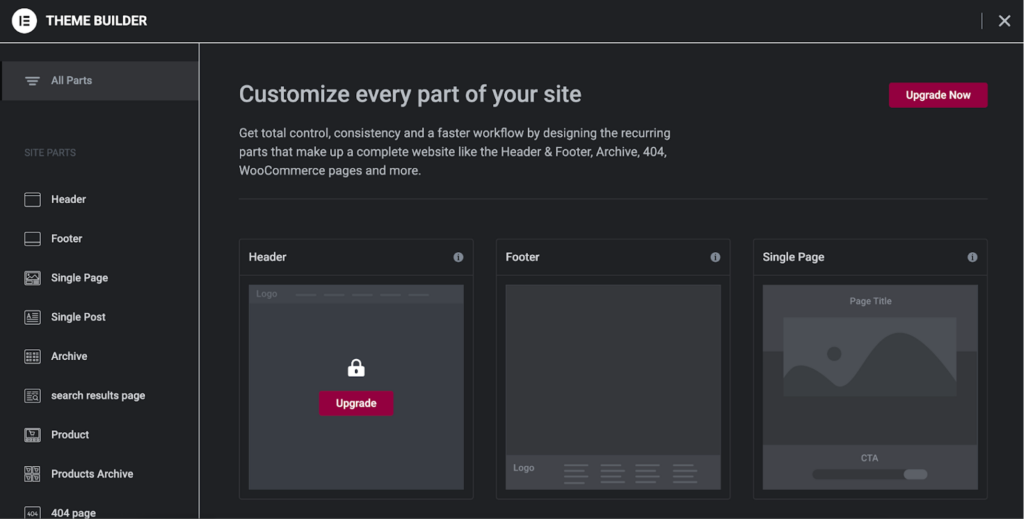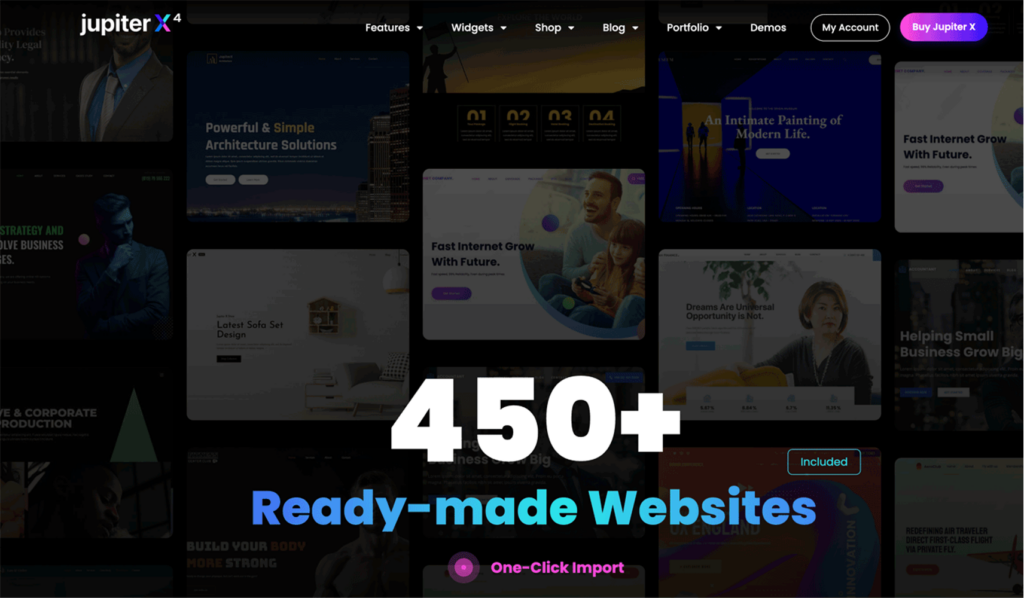
For the majority of agencies, Elementor Pro has long been the answer. It’s a speedy and visual way to build stunning WordPress sites with no code or little code, and it’s a simple sell to clients who want the advantages without technical frustration. But with the evolving market, agencies are now asking themselves: Is Elementor Pro the optimal business option?
Agencies are juggling client expectations, performance needs, and increasing pressure to reduce ongoing overhead. Where clients are accustomed to paying monthly for hosting, they’re far less likely to accept ongoing plugin or theme subscriptions—especially when they don’t understand the difference. They just want the site to work.
And the issue is: there’s such a thing as subscription fatigue. Everyone’s tired of paying every month for things they never even own—Netflix to Figma and beyond. Now with the rise of agentic AI tools and personal automation, many teams are increasingly reluctant to sign on to yet another SaaS-style deal—especially if it’s for underlying site infrastructure.
So in today’s post we’re going to look at the way Elementor Pro’s business model is possibly eating into the margins of your agency, why client lock-in is a recipe for catastrophe, and the way the shift to solutions like Jupiter X with a lifetime license will open the door to healthier client relationships and greater long-term profitability
1. Your Clients Expect the Site to Work—Not to Keep Paying for It
Most agency clients are happy to pay a hosting fee on a monthly basis—specifically on sites like Pagely where speed, uptime, and support are the focus. Few are excited about recurring fees for plugins or themes, though.
Actually, most don’t even know these tools exist. They hired you and the agency to create a working site. So when they’re hit with surprise renewal fees (or worse, broken functionality if the fees aren’t paid), trust is lost.
By building sites with repeat tools like Elementor Pro, you’re creating silent dependencies your customers are unaware of—but will feel if it fails. It leads to tough conversations and costly rebuilds, neither of which are beneficial to your bottom line.
2. Subscriptions Eat into Profit Margins
The bigger the client base is, the bigger the software stack is. Elementor Pro is not expensive in and of itself but with 10-50 sites the recurring fees mount up. Add in WooCommerce add-ons, sets of widgets, and sales funnel plugins and a project is suddenly weighed down with $500-$1000/year in license costs.
And unlike with hosting where the expectation and understanding is for ongoing payments on a month-to-month basis, theme and plugin subscriptions aren’t so apparent—until something goes wrong or a renewal is missed. It can lead to uncomfortable conversations with clients who believed they “bought the website” and not a succession of expiring licenses.
Since your stack is built on third-party tools that recur, it’s also harder to predict profit margins. The bigger your business gets, the bigger the software overhead—and the less straightforward it is to offer simple, flat-fee pricing to customers.
3. Lifetime Tools Help You Close More Deals
If your agency doesn’t rely on repetitive vendor licenses, it’s easier to competitively and confidently price projects. You’re not tacking on overhead per feature—you’re delivering a complete, solid solution for a flat project fee.
Clients like that level of transparency. They don’t want to have to worry about surprise renewal fees on plugins or what they will lose if they miss one. When your agency no longer relies on recurring vendor licenses, you have the flexibility to price projects more competitively. You’re able to present transparent, predictable prices—without the caveat of recurring third-party plugin renewals or potential functionality gaps.
This means easier client discussions with confidence, fewer headaches on the support front, and even an easier path to closing deals. Clients who aren’t bogged down with unexpected expenses remain longer, as well, boosting retention and lifetime value.
4. SaaS Reliance = Long-Term Risk
Elementor Pro not just enhances your site—it’s in its DNA. If you cancel or switch off, the very structure of your site will break down:
- Headers and footers disappear
- Popups and forms no longer work
- Layouts descend into shortcode chaos
That’s a rebuild waiting to happen—no agency will rebuild for free. Building on a subscription-based core locks both your clients and you into a cycle of technical debt and dependency.

5. The SaaS Plateau (and Why Agencies Are Fed Up with It)
SaaS isn’t the golden goose anymore. With AI writing tools and CRM platforms, agencies are getting bogged down in monthly fees that are beginning to feel more like overhead than innovation.
As agentic AI workflows grow in popularity, developers and marketers develop increasingly tailored in-house tools, reducing the popularity of the recurring-fee-based one-size-fits-all offerings.
In such a scenario, ownership matters now more than ever. Lifetime-licensed software is no longer seen as old-fashioned—intelligent and stable. It was not the standard during the peak of the SaaS era but is gaining popularity once again.
Jupiter X: The Scalable and Bloat-Free Solution
Jupiter X is a multipurpose WordPress theme on the Elementor platform and eliminates the necessity for Elementor Pro completely. Artbees developed it with a performance-optimized core coupled with a comprehensive set of native tools to make development easier, reduce the need for plugins, and optimize scalability in general. Agencies seeking to expand project margins and client satisfaction will find a one-stop solution in Jupiter X—without the added weight of recurring costs.
Single Payment, Lifetime Access
The main advantage of Jupiter X over Elementor Pro is the price: a simple $58 lifetime license fee. No renewals. No subscription fees. For multi-client agencies, it translates into substantial long-term savings—and a simpler cost structure when it’s time to quote projects.
Built-In Replacements for Elementor Pro Features
Jupiter X fully replicates (and in most cases enhances) the functionality you would have in Elementor Pro:
- Layout Builder (to replace Theme Builder in Elementor Pro) for a complete control of headers, footers, archives, and individual pages
- Native Form Builder and Popup Builder
- Motion effects, animations, global styling, and global widgets
- Custom code, fonts, iconography, attributes, and conditional show logic
All in-one—no extra license or add-on dependencies required.
No Need for Extra Third-Party Addon Libraries
Jupiter X has a complete native widget library, and third-party libraries such as Crocoblock, JetElements, Happy Addons, or Unlimited Elements are not required anymore. Widgets such as:
- Product Grids and Filters
- Sticky Scrollers and Carousels
- Accordions, Tabs, Marquees, and Content Switchers
- Opt-ins, Pricing Tables, Image Comparisons, etc.
The result: reduced plugin conflicts, easier maintenance, and cleaner, faster sites.
WooCommerce optimization suite
Included with Jupiter X is SellKit, a comprehensive WooCommerce toolkit that substitutes multiple third-party eCommerce plugins:
- Custom checkout page builder
- One-click sales funnels and order bumps
- Smart, personalized promotions (coupons, auto-discounts, alerts)
- Built-in variation swatches

SellKit makes Jupiter X a comprehensive WooCommerce theme with built-in features to fight cart abandonment, checkout friction and low engagement in WooCommerce stores without the need for add-ons such as CartFlows, CheckoutWC, YITH plugins and more.
Performance and Hosting Efficiency
For high-end hosting agencies like Pagely, performance is not a nice-to-have but a requirement. Sites built with bloated stacks will encounter scalability issues, higher resource utilization, and longer page loads even on high-end hardware.
Jupiter X is performance-centric. It does away with the need for Elementor Pro and a few third-party plugins and in the process minimizes the HTTP requests, external scripts, and potential code conflicts dramatically. It results in:
- Lower Time to First Byte (TTFB): Lower server response times lead to faster perceived load speed and reduced bounce rate.
- Improved Core Web Vitals: Smaller pages lead to better scores in Google’s performance metrics and better SEO and UX.
- Smaller page size and fewer dependencies: That is, improved use of caching, CDN delivery, and browser rendering.
- Fewer server loads: Reduced memory use and server processing put less load on the resources of your hosting plan.
Fewer hosting company support tickets. More happy customers and better long-term site uptime for agencies.
More Professionally Designed Templates
Jupiter X offers over 450 professionally designed templates—well beyond Elementor Pro’s standard fare. That means:
- Faster project turnaround
- Greater variety in client verticals
- Streamlined onboarding for junior team members and freelancers
This can simplify the delivery for agencies with multiple clients and timelines.

Conclusion: Take Control of Your Stack
The plugins and tools that you employ determine the profit model for your agency. Elementor Pro is convenient perhaps, but it costs—both in terms of dollars and in flexibility, client confidence, and long-term sustainability.
Jupiter X offers a compelling alternative: a complete, scalable solution that allows you to get better results with fewer parts—and greater control over your stack.
If you’re really serious about building a leaner, smarter agency model, consider trying an Elementor Pro alternative such as Jupiter X.
Rethink your stack. Reclaim your margins and build without the bloat.
